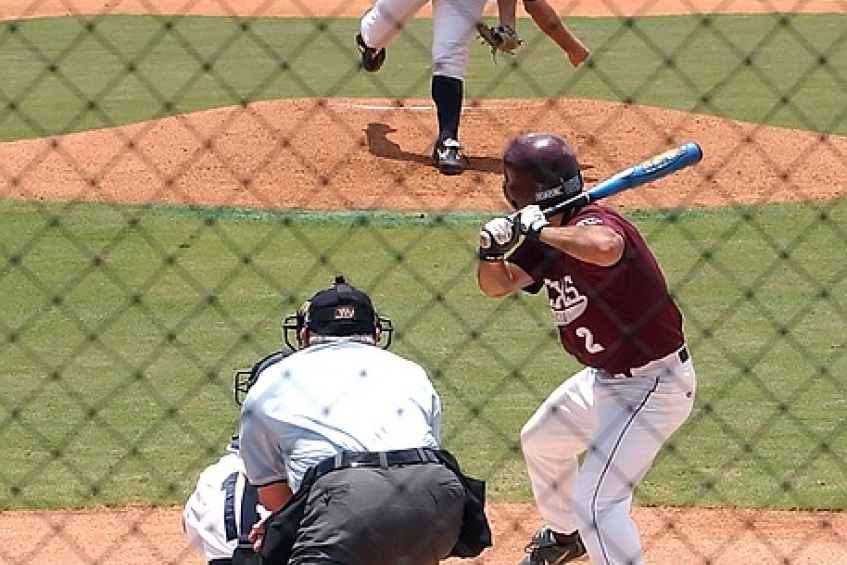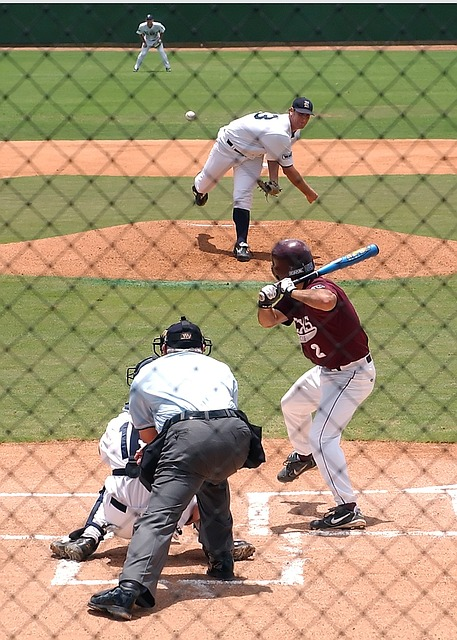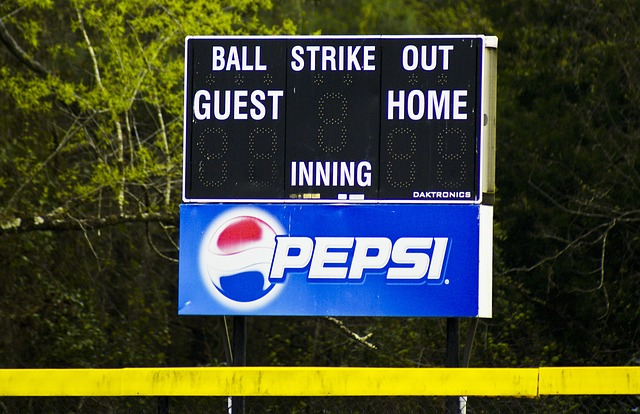
At a full count in baseball, three balls and two strikes have been thrown. The batter now faces the daunting task of trying to win the game with one at-bat. All eyes are on him as he steps up to bat – when his count reaches its climax (three balls & two strikes), everyone feels an intense anticipation for what will come next. It’s all or nothing! This thrilling moment makes baseball truly exciting for fans who watch in suspenseful expectation as each pitch is fired from the pitcher’s hand and thwacked by the hitter’s bat – determining whether victory can be achieved before yet another inning ends.
A full count in baseball occurs when a batter has two strikes and three balls with less than two outs.
It is an important, exciting moment that creates suspense for players and fans alike.
Full counts have evolved over time due to changes in pitching and hitting strategies, creating strategic advantages for both the offense and defense.
In major league baseball, a full count occurs when the batter has less than two outs and three balls with two strikes against them. This puts significant pressure on both parties involved in an at bat: The pitcher must make sure not to give away too much advantage to the hitter, while batters have more incentive for aggressive swings as they face this scenario. In past times scoreboards that had blank spaces designated for 3 balls and 2 strikes gave way to use of the term “full counts”; its origin remaining unknown until today adds mystery surrounding it. By 1991, this rule was already being used widely – fourth most common occurrence – marking one key pitch deciding whether it will be hit or walk given out by strikeout regular or backwards k variety.
The full count is highly valued in the game of baseball, as it can add to a very tense and meaningful moment on the field. Working this “count” entails that batters resist swinging at early pitches from pitchers, so they are able to get one more chance for success when things reach 3-2. Interestingly enough, studies show there is no definitive advantage granted by either side due to these counts. All sides have an even.453 On Base Percentage (OBP). As such, this increases its importance in each match and provides everyone watching with plenty of excitement. Baseball fans everywhere understand how critical succeeding or failing during a full count situation a good pitch might be, making it one of the most captivating features within the sport itself!
When it comes to a full count in baseball, there are several terms that go hand-in-hand with this critical moment. A “payoff pitch” is when the pitcher attempts to throw a deciding third strike just as soon as the batter and pitcher standoffs reach 3–2 on the count. Alternatively, batters may use “working of counting” techniques by making pitchers work harder for successful strikes – something that can prove beneficial during any ensuing full count situation. On top of this, catchers might also seek an advantage through tactics known as ‘working out hitters’, which works towards distracting their focus while trying to keep up their performance at bat. Understanding these specific phrases plays into understanding how both sides employ strategic maneuvers once they come head-to-head near a hard earned decision about whether or not a base hit will be made possible before three outs happen again shortly after one another due strictly to approaching counts like those found frequently within particular frames often used today regarding America’s favorite pastime overall!
When the count stands at three balls and two strikes, commonly known as a full count, both pitchers and batters will resort to various tactics in order to gain an edge in force situation. For example, batters may decide on being aggressive or more reserved by swinging for the first pitch thrown by pitchers depending on their preference while pitchers must use specific strategies based on individual players’ performance or game dynamics.
On this difficult situation where neither one has many room for errors, common approaches involve pitching hard-to-hit ball such as breaking pitches near strike zone edges so that hitter can manage it through patient waiting but also ready enough with foul hitting off tough throws still remaining within same turn of at bat. Meanwhile, hitters should search suitable hits from desired areas around strike zones considering tight competition between them all.
When the count is full, batters look to take measures like defending their home plate and being more selective with swings in order to get an advantage. This can be done by shifting closer to home plate which will decrease the probability of getting called out on strikes thus enlarging the area where contact between bat and ball could occur. Also, choking up on a bat’s handle gives them better control for quick strokes aiming at making good contact as well.
These approaches may help success but another tactic sometimes employed during such moments is sitting tight waiting for one specific pitch from pitcher hoping it brings a mistake along – this way forcing him into throwing multiple pitches opening up greater possibility of connecting solidly with batting mediums (ball).
When in a full count situation, pitchers must think very carefully about their plan. Depending on the batter and how well they can throw strikes or pitches outside of the strike zone, they need to determine what will be most effective for that particular plate appearance. The pitch selection should challenge the hitter while still being located within the box. This way it increases potential chances for either a swing and miss or just an overall weakly-hit ball outcome if contact is made with any thrown pitch.
It is up to these men (pitchers) to find this delicate balance between execution as far as pitching goes but also having good strategy behind each offering during every single count given at home plate. It’s all based on what you bring versus your opponent’s weaknesses/strengths when making decisions regarding which type of ball is delivered — location matters heavily too! As such, focus remains key toward achieving success from both ends: strategizing and throwing correctly according to what has been planned out by pitcher before even stepping into circle again another individual one-on-one in a baseball game.

When the count reaches a full count, the batter must decide whether to take a swing or let go of the pitch. It is then up to the pitcher if they want to throw in a strike or ball for that particular play and it may be necessary at times for baserunners on base (if any) during this crucial point in time who will have an option as well regarding staying stationary.
or trying their luck by attempting to steal bases. In some cases, depending on game strategy, there can also be intentional walks given from pitchers when reaching this kind of situation/count too.
According statistics collected since 2019 show that 31% concluded with walks where 27 % ended up striking out whereas 13 percent succeeded into getting hits instead. Other possibilities such as playing outs were outcomes recorded after these aforementioned types happened throughout the entire season with all counts played thus indicating how intricate those decisions are taken both by batters and pitchers involved while performing under pressure filled moments like ‘Full Counts’.
Baserunners will run on full counts to increase their chances of scoring and making it more difficult for the defense to complete a double play. This strategy also provides them with an early start if there are fewer than two outs, adding unpredictability that makes the opposing team’s job much harder in force situations. Managers may choose this course of action too since they can prevent any possibilities of a double play arising from high count plays.
When the pitcher intentionally throws four balls rather than strikes during a full count, an intentional walk can be used to advance runners and prevent strong hitters from batting. This strategy is seen as controversial by experts and fans of baseball alike since it takes advantage of a rulebook loophole instead of requiring true skill or athleticism. Nevertheless, these walks remain part of the game’s tactics which may greatly affect its outcome with just one pitch in certain counts.
While this allows for more players on base when their best batters come up at bat. Thus increasing chances to score runs, many oppose using such strategies due to being unhonorable moves that essentially waste pitches in order not hit the ball with making contact via batter nor Bat striking ball.

The importance of full counts in baseball has risen over time thanks to modern tactics used by teams. In 1991, a whopping 8.6 full count events occurred per game and ranked fourth for frequency among all outcomes on the field. By 2010, this number had climbed to 12.7% of plate appearances ending with a three-ball/two-strike battle. Still occupying third place amongst those same end results that year as well. Lastly, 2019 saw an even greater rise with 14.3% ending in these types of situations highlighting their heightened presence within the sport overall today.

Full counts are increasingly present in the game of baseball and can be credited to a number of shifts, including alterations in pitching methods, batting approaches and an enhanced interest in sabermetrics. Data has revealed that 58% of 3-2 pitches within these full count moments enter into the strike zone while 54.1% lead to a walk when not taken by the batter. Swung at the pitch usually get fouled off between 33%-40%, for any type of count against them.
This surge in occasions involving full counts has impacted baseball strategy as well since teams must approach every situation cautiously with more deliberate decisions being made during this pressure filled moment which could alter what happens throughout the remainder of playtime. Pitchers need skills set matched up precisely those by batters making both sides incredibly important in playing out their pieces throughout each high stakes round deciding who strikes it big or is left stranded.
Full counts have a major impact on baseball strategy, as they present offensive opportunities and force pitchers to make critical choices. The count can lead to more walks, being hit by the ball, or other advantages for the offense that could result in an increase of runs earned. Pitchers must decide whether throwing a strike is worth it or if intentionally walking will be best suited. This decision has large consequences when determining who wins at the end of each game.
As full counts rise consistently in frequency over time, their strategic importance only becomes stronger than before. Every team should adjust their strategies accordingly with the potential openings offered from these situations for maximum effect during play – making events all-around entertaining for players and spectators alike!
When the count reaches three balls and two strikes, it is known as a full count, an exciting moment in baseball that puts both batters and pitchers to the test. As these full counts have become increasingly common over time, their strategic value has also grown. To be able to understand and appreciate all of what goes on during this high-stakes situation – from tactics used by batters or baserunners to analyzing statistics & trends – gives us a deeper understanding of just how complexly layered chess match every game truly is.
In baseball, a “full count” is expressed as 3-2. This indicates the batter currently has three balls and two strikes in their at bat. The result of this combination means that if they don’t hit on the next pitch, then they will be called out. Consequently, it’s an important milestone for any game of baseball when the count reaches full status with both pitches and balls accounted for.
In a full count, the pitcher’s advantage is clear – if they throw a strike and the hitter takes it upon themselves to swing at said pitch, their chances of getting any sort of decent outcome are slim. As such, for hitters in this situation, it would be wise not to take that gamble with swings on strikes during these counts. It should also be noted that regardless of whether or not you’re speaking from perspective as either player involved. Considering both sides.
The 3-1 count is a hitter’s advantage since it suggests there are three balls and one strike. This arrangement of numbers (first the number of balls, then strikes) encourages the pitcher to pitch within the strike zone in order not to award walks to batters. As such, this situation gives an edge to batters who now have more opportunities for hitting or drawing on walks when presented with thrown strikes from opposing pitchers. As long as they are able to keep their eye on that ball flying at them while avoiding errant pitches outside of those bounds set by strke zones, batters can maintain control over these meetings between bat and ball in terms both aesthetically pleasing and statistically beneficial!
A full count is a pivotal situation in baseball, producing thrilling suspenseful outcomes and increasing the difficulty for both pitcher and batter. With high pressure levels hanging around, an ideal pitch must be delivered by the former while readiness to hit from the latter is necessary. Both parties are aware that this moment can mean success or failure of their efforts since it has such crucial implications on what will take place on field within a game of baseball itself.
Batters often try to manipulate the count by guarding the plate and waiting for a suitable pitch in order to get a hit when the count is full.
Chris Sloan is a former baseball league commissioner and travel baseball coach who has made significant contributions to the sport. In 2018, he founded selectbaseballteams.com, a website that helps parents find youth and travel baseball teams in their local areas. Since its launch, the website has experienced impressive growth, offering a wealth of resources including teams, news, tournaments, and organizations. Chris's unwavering passion for baseball and his innovative approach to connecting parents with quality baseball programs have earned him a respected reputation in the baseball community, solidifying his legacy as a leading figure in the world of youth and travel baseball.
There are 0 comments on "What is a full count in baseball?"
chandler allen says:
"Hi my name is chandler, i’ve enjoyed..."
On Wanting to tryout for summer ball. as an 18 year old
david graham says:
"With no current MLB team in Canada,..."
On With no current MLB team in
Charles Chavez says:
"To All Coaches: Do you have13U or..."
On Looking for Games